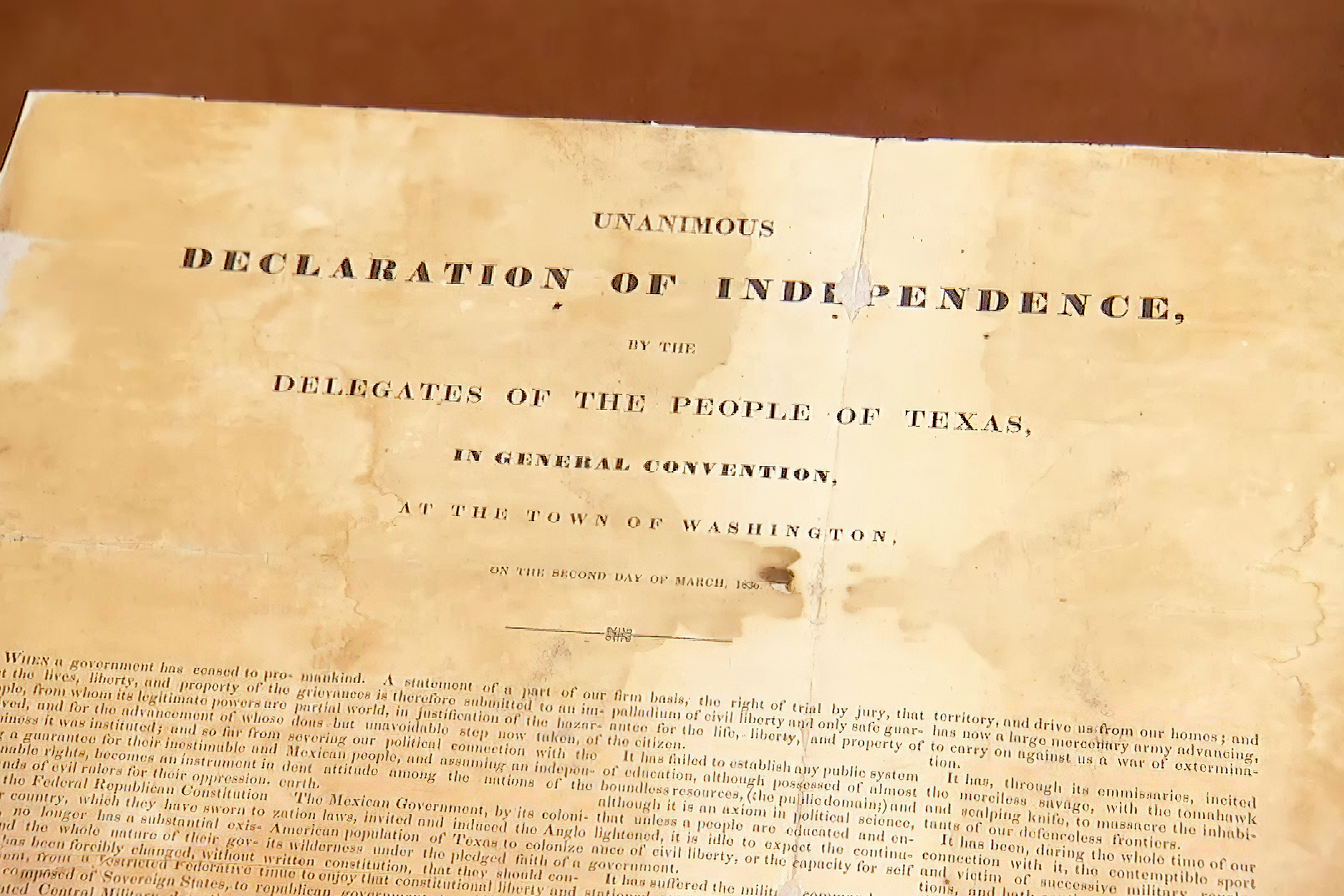
Texas Declaration of Independence
The weather in the small southeastern Coahuila y Tejas town on March 1, 1836, was near freezing, and there were bone-chilling winds in the air when 59 delegates met in a small, unfinished rented wooden building with no coverings on the windows. The name of this town was Washington-on-the-Brazos, which became the first capital of the Republic of Texas. This meeting became known as the Convention of 1836, and three items were on the agenda: 1) to declare independence from Mexico and its dictator-president Antonio Lopez de Santa Anna, who wanted complete control over Texas and its settlers; 2) to develop a Texas Constitution patterned after the United States Constitution; and 3) to establish an ad interim government known as the Republic of Texas. The delegates chose David G. Burnet as the republic’s ad interim president and Sam Houston as the Commander-in-Chief of the military forces of the republic.
The Texas Declaration of Independence was adopted on March 2, 1836, and during the next several days, all 59 delegates signed the declaration that George C. Childress had written.
Three important events were occurring simultaneously in February and March of 1836: the just-described Convention of 1836, the Battle of the Alamo, and the Runaway Scrape. The Battle of the Alamo began on February 23, 1836, when Santa Anna’s army arrived in San Antonio. He immediately started the bombardment of the Alamo compound, defended by fewer than 200 volunteer soldiers. The volunteer army was flying the Mexican flag of 1824 above the Alamo, indicating that they were fighting to re-implement the Mexican Constitution of 1824 and to separate from the Mexican state of Coahuila y Tejas—not to separate from Mexico. The Battle of the Alamo lasted 13 days, falling to Santa Anna and his thousands of Mexican soldiers on March 6, 1836. These Alamo defenders never knew that the purpose of the war had changed on March 2—that Coahulia y Tejas had now become the Republic of Texas.
On March 6, 1836, Santa Anna and his soldiers headed east to capture Sam Houston, the Texas army, and the leaders of the Republic of Texas. The Convention ended quickly in the early morning hours of March 17, when the delegates got word that Santa Anna was only 60 miles away and headed eastward. The owners of the building, businessmen Noah T. Byers and Peter M. Mercer, never got their rent because Sam Houston ordered the government and the settlers to retreat eastward to escape capture by Santa Anna, who vowed to destroy everything and everyone in his path, including the government and the army. This became known as the Runaway Scrape, a mass exodus of Texans from the Anglo settlements.
President Antonio Lopez de Santa Anna finally caught up with Commander-in-Chief Sam Houston at the San Jacinto River near present-day Houston on April 21, 1836 for the decisive Battle of San Jacinto.
